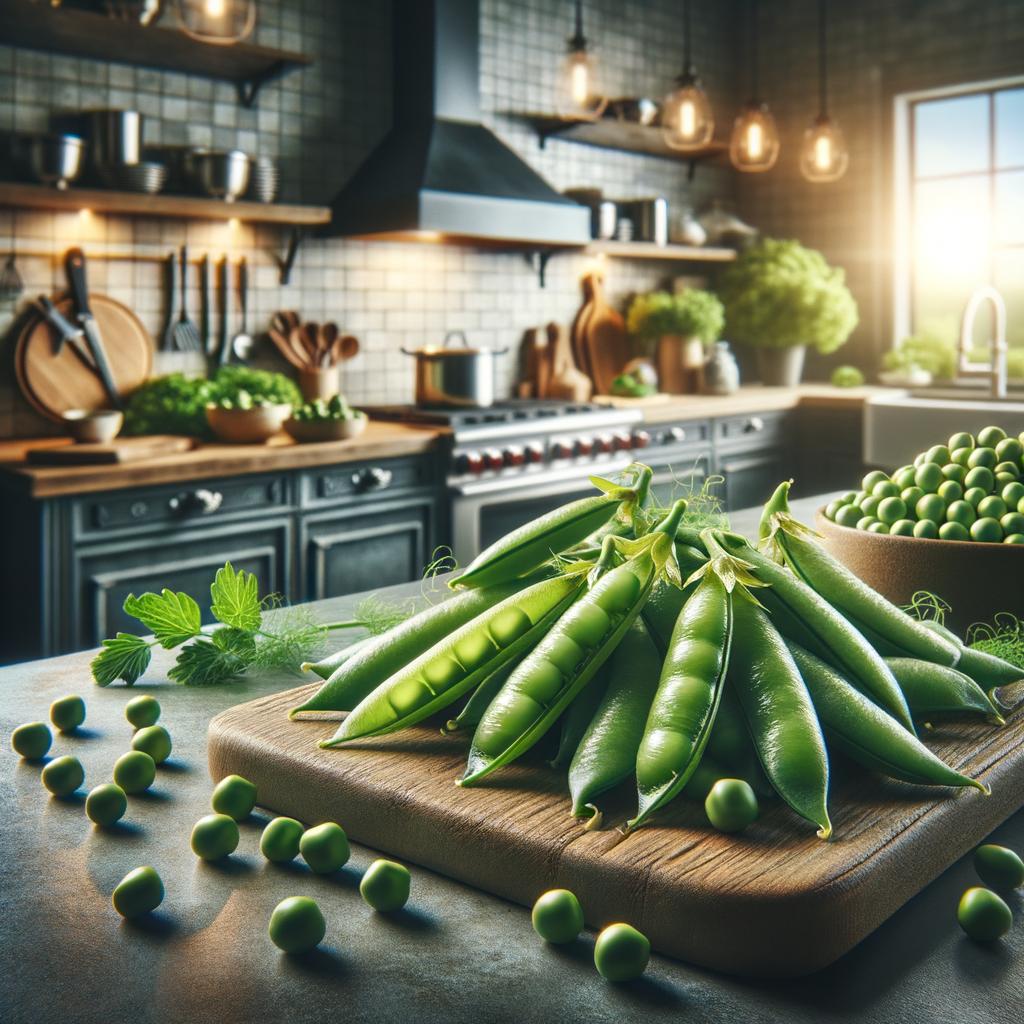English Peas

Description
English peas, also known as garden peas, are a delightful ingredient that heralds the arrival of spring. They come nestled in a pod, like precious pearls in an oyster, each pea a vibrant green gem. When fresh, they are firm to the touch, yet yield a tender, almost buttery texture when cooked. Their flavor is sweet and succulent, a taste of springtime itself. What sets English peas apart from their legume cousins is their ephemeral nature. Unlike dried peas, they are fresh and must be eaten soon after harvest, which lends them a certain charm and a sense of fleeting beauty.
Primary Uses
English peas are a versatile ingredient, used in a wide array of dishes across various cuisines. They are a classic addition to shepherd's pie in British cooking, and are often featured in creamy pasta dishes in Italian cuisine. In Indian cuisine, they are used in flavorful curries and samosas. Beyond their culinary uses, peas have a cultural significance in many societies. In the Southern United States, for example, eating black-eyed peas (a close relative of the English pea) on New Year's Day is believed to bring good luck for the upcoming year.
History
The history of the English pea is as rich and varied as its uses. They have been cultivated for thousands of years, with archaeological evidence of their use dating back to the Bronze Age. They were a staple in medieval Europe, and their cultivation was revolutionized in the 17th century by Dutch growers, who developed sweeter, more tender varieties. The humble pea also played a significant role in scientific history. It was the plant that Gregor Mendel, the father of modern genetics, used in his groundbreaking experiments in the 19th century. Over time, the popularity of fresh English peas has waned, overtaken by the convenience of frozen peas, but they remain a cherished sign of spring for those who appreciate their delicate flavor and fleeting availability.
Nutritional Information
English peas are not just delicious, they are also highly nutritious. They are a good source of vitamins A, C, and K, and provide a healthy dose of dietary fiber. They are also rich in protein, which is uncommon for a green vegetable, making them a great choice for vegetarians and vegans. Their high fiber and protein content can help to control blood sugar levels, making them a beneficial ingredient for those managing diabetes. Compared to dried peas, English peas have a higher water content and a slightly lower calorie count, making them a lighter choice for those watching their calorie intake. All in all, the English pea is a beautiful blend of taste, nutrition, and history, a true gem in the world of food.

